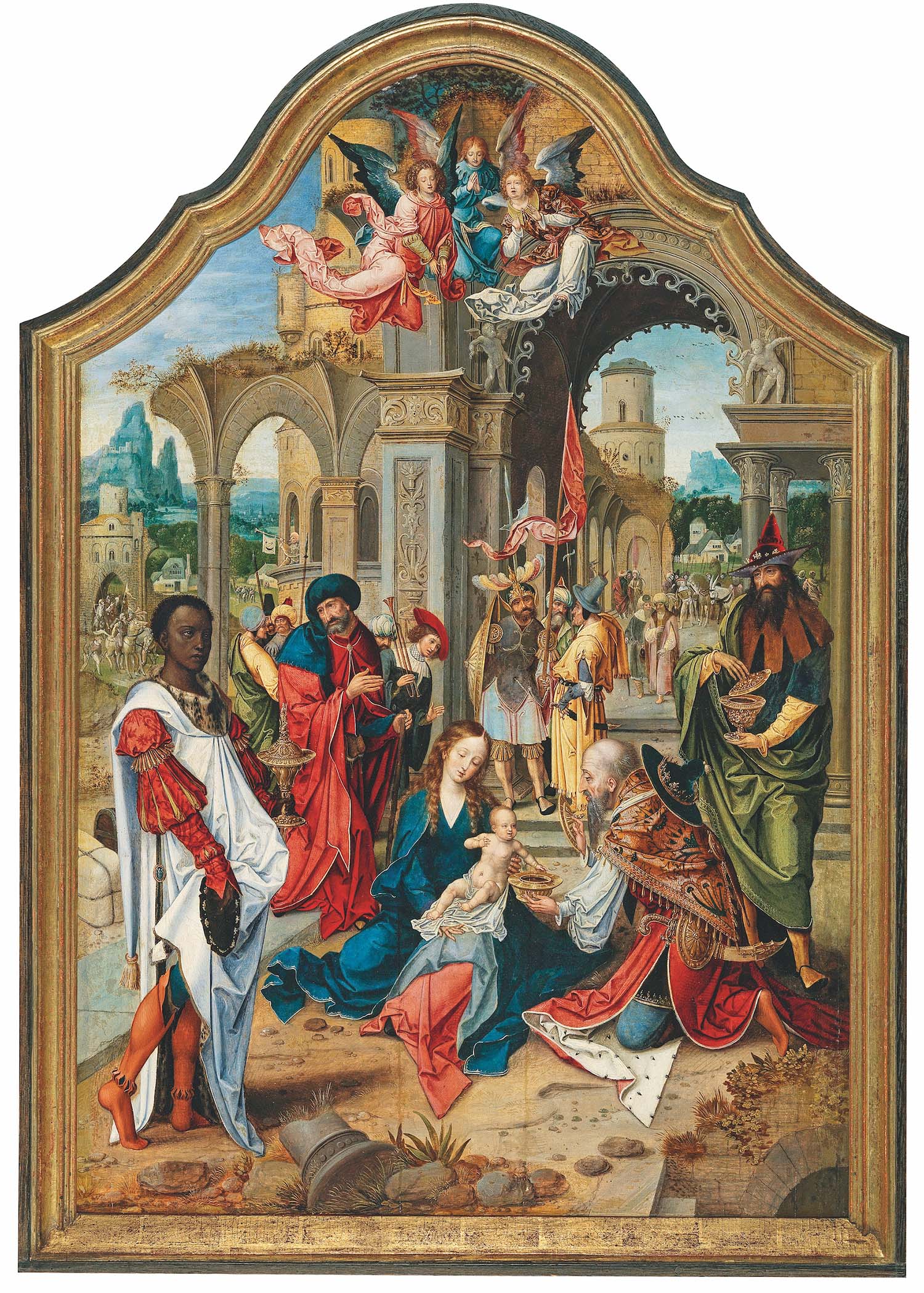
PRINCELY ART
One of the highlights of the upcoming spring auction is undoubtably the original central panel of a triptych by Pieter Coecke van Aelst. Not only is it one of the most important works by the Flemish master, but it also has a fascinating provenance, having once been the property of the Dutch royal household.

The Adoration of the Magi by Pieter Coecke van Aelst (Aalst 1502-1550, Brussels) has an important royal provenance. It once belonged to Willem II, or ‘Slender Billy’ as he was known to the Duke of Wellington. Willem was not just the dashing hero of the Battle of Waterloo, but as Prince of Orange, he was a tastemaker and became a pioneer in the collecting of Flemish art of the Renaissance. His first foray into buying paintings came soon after his victory in 1815, hanging his apartments in the palace of the Dutch Royal family in Brussels with fine pictures. Not only was he involved in driving Napoleon out of Flanders, but through his collecting, Willem II also reunited works from the Low Countries which had been dispersed during the Napoleonic Wars. Churches in the region had been forced to sell off their works of art during the 18th century, due to a raid on their revenues resulting from religious reformation. From 1797 onwards, this dispersal of church art works was compounded as the invading French Revolutionary armies carried off yet more works with which to furnish the Louvre in Paris. This period of plunder even saw the dismemberment of the altarpieces themselves, including one by the Antwerp master, Pieter Coecke van Aelst, in St Truiden.
As Prince of a kingdom that at that time included Flanders, Willem felt more at home in the Catholic Southern Netherlands than at his father’s court at the Hague. Unfortunately for the discerning prince, the Belgians revolted in 1830, again with the assistence of the French, leaving Willem’s collection impounded in Brussels. Forced to build a new home for his fine works, Willem bought into the spirit of the Gothic revival and re-created a feasting hall, fit for the heroic tales of old that were popular at the time, behind the Kneuterdijk Palace in the Hague.
The Adoration of the Magi was bought by him in 1840 and can be seen in a water colour painted by Huib van Hove of 1842. It can be seen in the background of the picture, on the right hand side, just above the lady dressed in blue, walking on the arm of an elegant gentleman. When Willem II died, his younger brother acquired the picture, and it remained the property his family until the 1960s.

The Adoration of the Magi was originally the central panel of a triptych. It was devised by Coecke van Aelst when he was a journeyman in the studio of the so called “Master of 1518”. Infra-red reflectography reveals that the young impresario experimented with additional figures in the composition and with the inclusion of festoons on the monumental architecture, however he chose not to use them in his refined final painting. The rich textures of the Magi`s costumes, and the gilded vessels of their gifts made the painting a most decorative piece, appropriate both for the 16th century oratory for which was originally intended, and for its later role, appealing to the gothic taste of the Dutch King. As such and combined with it’s unique royal provenance, it is one of the most important pictures yet seen from the Antwerp master.
AUCTION
Old Master Paintings, 9 June 2020
Palais Dorotheum, Dorotheergasse 17, 1010 Vienna
old.masters@dorotheum.at
Tel. +43-1-515 60-403












